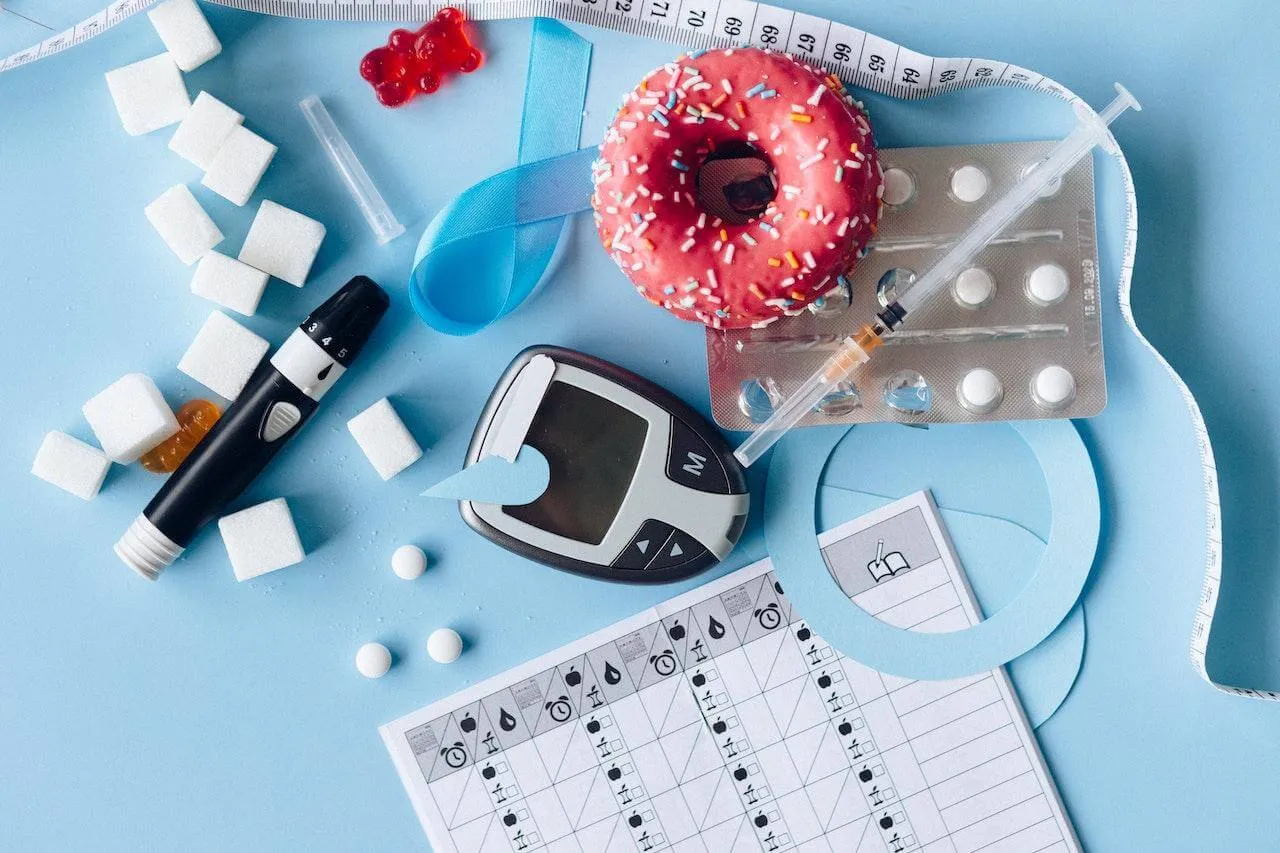Managing diabetes effectively requires a combination of lifestyle changes, monitoring, and medication. For many people with diabetes, insulin pumps have become a game-changing way to automate insulin administration. Insulin pumps offer more convenient and precise control over blood sugar levels than traditional injections. But how do insulin pumps work, and are they right for everyone? This article will walk you through the functionality, types, benefits, and downsides of insulin pumps, helping you decide whether they fit your diabetes management.
{{mid-cta}}
Understanding The Functioning of Insulin Pumps
Insulin pumps are small, wearable digital devices designed to deliver insulin continuously throughout the day, mimicking the way a healthy pancreas would release insulin. The goal of using an insulin pump is to keep your blood glucose within a healthy range by delivering the hormone in a controlled and consistent way. These devices allow users to set the amount of insulin that their body needs at different times of the day, offering an automated yet highly personalized way of managing blood glucose levels.
How Insulin Pumps Work

An insulin pump has several key components: a reservoir (or cartridge) of insulin, a small cannula or tubing inserted under the skin, and a control unit that allows the user to program the device.
Nowadays, all insulin pumps offered in the U.S. incorporate a continuous glucose monitor (CGM) and are designed to automatically adjust insulin delivery based on real-time blood sugar data. They are often referred to as "closed-loop" or "artificial pancreas" systems, and for the most part, they don’t require manual control.
The pump continuously delivers a steady, low dose of rapid-acting insulin known as the "basal rate." This basal rate is necessary for maintaining a constant energy flow to cells, even when your body is not absorbing food.
Your body’s basal insulin needs change throughout the day as factors like hormones change. For example, most people need a higher basal rate in the morning when cortisol spikes and raises blood glucose levels. The required basal rate might also vary over the long term as your body and lifestyle change. For example, your required basal rate could shift as you age and change your exercise routine. Like a pancreas, an insulin pump will adjust its basal rate in response to these changes but you’ll also work with a healthcare provider to verify it’s working correctly.
After eating, you’ll need a higher amount of insulin to counteract the spike in blood sugar. Insulin pumps suggest a larger volume of insulin called a “bolus” based on your current blood sugar level and the carbohydrate information you enter.
Pumps can come with various features that make it easier to control and monitor your blood sugar levels. Here are some common ones:
- Continuous monitoring technology that dictates insulin release.
- Interface for manual adjustments to insulin quantities.
- Notifications for large glucose fluctuations and when battery or reservoir is low.
- Bluetooth connection to smart devices and app control.
<div class="pro-tip"><strong>Also Read: </strong><a href=what-is-a-continuous-glucose-monitor>How Does a Continuous Glucose Monitor (CGM) Work?</a></a>.</div>
Types of Insulin Pumps
Different types of insulin pumps are on the market, each offering various features to suit individual needs. Choosing the right one depends on lifestyle, personal preference, and medical needs. Below, we discuss the main types of insulin pumps available.
Tubed Insulin Pumps
Tubed insulin pumps are connected to the body via a thin, flexible tube that delivers insulin through a small cannula inserted under the skin. The cannula is inserted manually or with a special device and held in place with an adhesive covering. It has a needle inside that is removed after it’s used to pierce your skin. While the pump lasts several years, the cannula, tubing, and reservoir will need to be changed every couple of days. These pumps are worn outside the body, often clipped to a belt or kept in a pocket. The cannula can be inserted in soft areas of the body like your upper arm, belly, or thigh.
Tubed pumps provide the advantage of consistent insulin delivery, but the tubing can sometimes be cumbersome for those with active lifestyles. Also, people usually remove the pump and tubing for swimming and showering though waterproof devices are available.
Tubeless Insulin Pumps (Patch Pumps)
Tubeless or patch pumps eliminate the need for tubing. These pumps are attached directly to the skin and deliver insulin through a small patch that sticks to the body. The pump is connected through Bluetooth to a controller like a smart device app, which allows the user to program insulin delivery. These types can be attached at the same sites as tubed insulin pumps, like the arm, belly, or thigh. Patch pumps offer more freedom of movement, making them ideal for those who don’t want the hassle of tubing. They are also more convenient to swim and bathe with. However, they usually need to be changed entirely every couple of days.
Benefits of Insulin Pumps

Insulin pumps are an alternative to multiple daily injection (MDI) insulin therapy, which involves using syringes or pens to inject long-acting and short-acting insulin at several time points throughout the day.
Insulin pump therapy comes with several advantages, especially for individuals who depend heavily on insulin therapy to manage their diabetes. These benefits can improve quality of life and blood sugar control compared to manual injections.
Key Benefits of Insulin Pumps
More Precise Blood Sugar Control: Pumps offer more precise insulin delivery and are highly customizable compared to other methods. This can lead to better overall blood sugar management, especially when basal rates are tailored to individual needs.
Easier Dosing Adjustments: Users can adjust insulin doses on the fly based on activity levels, carbohydrate intake, or current blood sugar readings. This flexibility allows for better responsiveness to changing needs.
Improved Blood Sugar Stability: Insulin pumps can help reduce the risk of both high blood sugar (hyperglycemia) and low blood sugar (hypoglycemia) by providing a steady supply of insulin throughout the day.
No Need for Multiple Injections: Pumps eliminate the need for daily injections, offering a less invasive and more discreet method of insulin delivery.
Fewer Blood Sugar Spikes: Many individuals find that insulin pumps reduce the occurrence of post-meal blood sugar spikes, as bolus doses can be timed more accurately than manual injections.
Customizable for Exercise and Sleep: Pumps allow users to temporarily adjust their basal rate for different activities, such as exercise or sleep, to avoid fluctuations in blood sugar.
Analyzable Data: Insulin and blood glucose data are often stored on the device, which can be downloaded and analyzed by you and your healthcare provider. This can help with long-term diabetes management.
Downsides of Insulin Pumps
Despite their many advantages, insulin pumps are not without drawbacks. Some individuals may find certain aspects of pump use challenging, and the devices may only be suitable for some.
Potential Downsides of Insulin Pumps
Training is Required: Properly learning to use an insulin pump takes time and professional guidance. Incorrect use can lead to poor blood sugar control or even dangerous situations like diabetic ketoacidosis.
Cost: Insulin pumps are more expensive than traditional insulin injections. The upfront cost of the device and the ongoing expense of supplies like infusion sets and reservoirs can be a barrier for some.
Skin Irritation or Infection: Because insulin pumps require a cannula or patch to be inserted or attached to the skin, there’s an increased risk of skin irritation or infections, especially if the site isn’t changed regularly. Being in constant contact with the device can also cause problems if you have sensitivities or allergies to its materials.
Constant Monitoring: While insulin pumps are designed to automate part of diabetes management, users still need to check their blood sugar levels frequently to ensure the pump functions correctly and delivers the right amount of insulin.
Technical Issues: Pumps are computerized devices; like all technology, they can malfunction. Users need to be prepared for potential issues like occlusions (blockages), low battery life, or errors in insulin delivery.
Are Insulin Pumps Good For You?
The decision to use an insulin pump is highly personal and depends on your lifestyle, age, activity level, and personal preferences. Some people thrive with an insulin pump's freedom and flexibility, while others may find it too cumbersome or expensive.
Insulin pumps can be used by anyone who requires synthetic insulin. This includes mostly individuals with type 1 diabetes, as well as some with type 2 diabetes. Individuals with type 3c diabetes may also require synthetic insulin. Many pumps can be used by children who are quite young, most requiring at least seven years of age.
If you’re deciding on whether to switch to a pump, consider whether you’re comfortable using the technology daily. Insulin pumps require programming and monitoring and a commitment to keeping up with maintenance tasks like changing infusion sites and ensuring the pump is functioning properly.
You’ll also have to commit to becoming trained to use your pump. Without proper guidance, users may not be able to optimize their pump settings, which could lead to inconsistent blood sugar levels or even severe complications. If you are interested in insulin pumps, work closely with a certified healthcare provider or educator to ensure you understand how to use the pump correctly.
While they’re not without their drawbacks, insulin pumps do offer a flexible, customizable, and precise alternative to other methods of administering insulin. With a computerized system to reduce some of the mental and physical load of diabetes care, insulin pumps can be a great choice for many individuals.
Using a CGM with Signos: Real-Time Data, Backed by AI
Managing diabetes goes beyond choosing an insulin pump—it’s about understanding how different treatments and lifestyle choices impact your overall health. Whether you’re exploring insulin pumps or looking for ways to improve blood sugar control through other means, Signos can help you find an approach that works best for you.
Signos pairs a real-time glucose biosensor with AI trained on tens of millions of data points to deliver personalized, science-backed guidance for weight management and health. See exactly how your body responds, and take action.
Learn how it works. Ready to get started? Join now.
<div class="pro-tip"><strong>Learn More: </strong><a href=types-of-insulin>Types of Insulin: An In-Depth Look</a>.</div>
Topics discussed in this article:
References
- Schmidt, N. Diabetes and the Insulin Pump. WebMD. https://www.webmd.com/diabetes/insulin-pump (accessed 2024-09-13).
- How Does an Insulin Pump Work?. Healthline. https://www.healthline.com/health/diabetes/how-does-an-insulin-pump-work (accessed 2024-09-13).
- Insulin pumps Information | Mount Sinai - New York. Mount Sinai Health System. https://www.mountsinai.org/health-library/special-topic/insulin-pumps (accessed 2024-09-13).
- Singh, A. Multiple dose injection (MDI) therapy, also known as multiple daily injections, is an alternative term for the basal/bolus regime of injecting insulin. Diabetes. https://www.diabetes.co.uk/insulin/multiple-dose-insulin-injection-therapy.html (accessed 2024-09-13).
- Types of Insulin Pumps. Cleveland Clinic. https://my.clevelandclinic.org/health/articles/insulin-pumps (accessed 2024-09-12).
- Apr 18, T. C.; 2024. What is an Insulin Pump and How Does it Work?. Tandem Diabetes. https://www.tandemdiabetes.com/support/diabetes-education/managing-diabetes/how-insulin-pumps-work (accessed 2024-09-13).



.webp)
.svg)



.webp)

.webp)




.svg)
.svg)
.svg)
.svg)
.svg)
.svg)
.svg)
